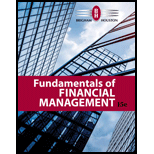
In the spring of 1984, Disney Productions’ stock was selling for about $3.125 per share. (All prices have been adjusted for 4-for-1 splits in 1986 and 1992.) Then Saul Steinberg, a New York financier, began acquiring it; after he had 12%, he announced a tender offer for another 37% of the stock—which would bring his holdings up to 49%—at a price of $4.22 per share. Disney’s management then announced plans to buy Gibson Greeting Cards and Arvida Corporation, paying for them with stock. It also lined up bank credit and (according to Steinberg) was prepared to borrow up to $2 billion and use the funds to repurchase shares at a higher price than Steinberg was offering. All of these efforts were designed to keep Steinberg from taking control. In June, Disney’s management agreed to pay Steinberg $4.84 per share, which gave him a gain of about $60 million on a 2-month investment of about $26.5 million.
When Disney’s buyback of Steinberg’s shares was announced, the stock price fell almost instantly from $4.25 to $2.875. Many Disney stockholders were irate, and they sued to block the buyout Also, the Disney affair added fuel to the fire in a congressional committee that was holding hearings on proposed legislation that would (1) prohibit someone from acquiring more than 10% of a firm’s stock without making a tender offer for all the remaining shares, (2) prohibit poison pill tactics such as those Disney’s management had used to fight off Steinberg, (3) prohibit buybacks, such as the deal eventually offered to Steinberg, (greenmail) unless there was an approving vote by stockholders, and (4) prohibit (or substantially curtail) the use of golden parachutes (the one thing Disney’s management did not try).
Set forth the arguments for and against this type of legislation. What provisions, if any, should it contain? Also, look up Disney’s current stock price to see how its stockholders have fared. Note that Disney’s stock was split 3-for-1 in July 1998 and 1,014-for-1,000 in June 2007.
Want to see the full answer?
Check out a sample textbook solution
Chapter 21 Solutions
Bundle: Fundamentals Of Financial Management, 15th + Mindtap Finance, 2 Terms (12 Months) Printed Access Card
- A firm needs to raise $950,000 but will incur flotation costs of 5%. How much will it pay in flotation costs? Multiple choice question. $55,500 $50,000 $47,500 $55,000arrow_forwardWhile determining the appropriate discount rate, if a firm uses a weighted average cost of capital that is unique to a particular project, it is using the Blank______. Multiple choice question. pure play approach economic value added method subjective approach security market line approacharrow_forwardWhen a company's interest payment Blank______, the company's tax bill Blank______. Multiple choice question. stays the same; increases decreases; decreases increases; decreases increases; increasesarrow_forward
- For the calculation of equity weights, the Blank______ value is used. Multiple choice question. historical average book marketarrow_forwardA firm needs to raise $950,000 but will incur flotation costs of 5%. How much will it pay in flotation costs? Multiple choice question. $50,000 $55,000 $55,500 $47,500arrow_forwardQuestion Mode Multiple Choice Question The issuance costs of new securities are referred to as Blank______ costs. Multiple choice question. exorbitant flotation sunk reparationarrow_forward
- What will happen to a company's tax bill if interest expense is deducted? Multiple choice question. The company's tax bill will increase. The company's tax bill will decrease. The company's tax bill will not be affected. The company's tax bill for the next year will be affected.arrow_forwardThe total market value of a firm is calculated as Blank______. Multiple choice question. the number of shares times the average price the number of shares times the future price the number of shares times the share price the number of shares times the issue pricearrow_forwardAccording the to the Blank______ approach for project evaluation, all proposed projects are placed into several risk categories. Multiple choice question. pure play divisional WACC subjectivearrow_forward
- To invest in a project, a company needs $50 million. Given its flotation costs of 7%, how much does the company need to raise? Multiple choice question. $53.76 million $46.50 million $50.00 million $53.50 millionarrow_forwardWhile determining the appropriate discount rate, if a firm uses a weighted average cost of capital that is unique to a particular project, it is using the Blank______. Multiple choice question. economic value added method pure play approach subjective approach security market line approacharrow_forwardWhat are flotation costs? Multiple choice question. They are the costs incurred to issue new securities in the market. They are the costs incurred to insure the payment due to bondholders. They are the costs incurred to meet day to day expenses. They are the costs incurred to keep a project in the business.arrow_forward
 Cornerstones of Cost Management (Cornerstones Ser...AccountingISBN:9781305970663Author:Don R. Hansen, Maryanne M. MowenPublisher:Cengage Learning
Cornerstones of Cost Management (Cornerstones Ser...AccountingISBN:9781305970663Author:Don R. Hansen, Maryanne M. MowenPublisher:Cengage Learning
